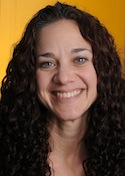
In the 2011 State of the Union address, President Obama challenged the nation to produce 100,000 excellent new science, technology, engineering, and math (STEM) teachers by the year 2021. In response, the creative design company Cultivated Wit launched the website “Blow Minds, Teach STEM,” an online campaign aimed at making the hardest of the hard sciences look fun—and encouraging college students to become teachers.
Faced with discouraging stats—U.S. students can’t seem to crack the global top 20 in math and science proficiency—a little humor goes a long way. “Blow Minds” sums up its project as goofy nationalistic rivalry: “You can help in this mission to grow smarter as a nation and stop us from getting bullied by that smarty-pants Finland.”
But does the U.S. need to look more closely at other countries like Finland to figure out how to better prepare American students for careers in the STEM fields? Or does this country already have the resources and the methods it needs to compete globally in STEM education? In advance of the Zócalo/Arizona State University event “What Can Other Countries Teach Us About Teaching STEM?”, we asked experts in education theory and strategy: What country can the U.S. look to as a model in improving science and math education?

There are two countries that provide useful models for the U.S. in terms of improving STEM education (note that I intentionally include technology and engineering in this description). The first, Finland, is a model for professionalized teaching. All teachers in Finland are required to have a research-based master’s degree prior to beginning to teach, and admission to these programs is highly competitive. It is no surprise that teaching is a highly respected profession in Finland, and the country’s top international education ranking speaks to the results of this strategy.
Germany provides another instructive model. The non-stop push for “college access” in our country has caused the pendulum to swing too far. A common sentiment in the U.S. is that a student who doesn’t go to a four-year college or university is a “failure.” The German education system rejects this one-size-fits all mentality. It provides numerous pathways for students ranging from apprenticeship programs to more traditional university options. The apprenticeship programs (vocational schools) combine coursework with paid, on-the-job experience, and nearly all students are offered jobs upon completion. As a result, Germany’s unemployment rate has been half of the rest of the European Union’s during the recent recession.
If we are to improve STEM education in this country, we need better qualified (and better paid and respected) teachers who are both knowledgeable and passionate about what they are teaching. And we need to create a diverse set of pathways for students that lead them more reliably into high-quality, in-demand STEM jobs, not all of which require a four-year degree. To do this, we would do well as a country to look to Finland and Germany for inspiration.
Kemi Jona is a research professor of learning sciences and computer science at Northwestern University and director of the Office of STEM Education Partnerships where he leads research and development projects in STEM curriculum design and cyberlearning.

We have a bit of a “Dorothy Syndrome” when it comes to improving STEM education: looking for answers “over the rainbow” when they are here, in our own backyards. And maybe we aren’t even asking the right question.
A 2012 Slate article, “Let’s Copy How Finland, South Korea, and Canada Teach Science” asked teachers in those countries to explain their success. The teachers spoke of making science relevant (Finland), of having an “inquiry centric” curriculum (Singapore), and accounting for student interest (New Zealand). These ideas are not new. John Dewey spoke of inquiry and relevant, experienced-based education in the 1930s. They were part of the “life adjustment” education movement of the 1950s, the post-Sputnik efforts to reboot science and math education of the 1960s, and many times in the years since.
Models that embody these principles are emerging right here, right now. STEM schools are growing across the country. Students are participating in authentic research through citizen science projects. Technologies are enabling young people to gather and analyze data to solve community problems. These ideas (and others) warrant consideration, particularly because they are operating here, in a U.S. context, with U.S. populations, in U.S. systems.
The question should not be “Where do we look for models?” Instead, we need to ask why we don’t see widespread adoption of ideas being used in other countries that have their foundations here. Put differently, how can we overcome the political, cultural, and psychological barriers that are standing in the way of enacting the models we’ve had for nearly 200 years?
Jeanne Century is the director of Outlier Research & Evaluation at CEMSE, in the Physical Sciences Division of the University of Chicago. She has been working to improve STEM education in the United States for 25 years.

Each year when the PISA test–an international assessment that measures 15-year-old students’ reading, mathematics, and science literacy–is released, there is a temporary panic around the decline of American students’ performance in science and math. Parents and policy makers sound a rallying cry to consider the STEM models of countries like Finland or Singapore. Educators are asked to imitate the models of these countries in order to prepare our students to compete in the global marketplace. Yet are we asking educators to push a square peg into a round hole? The elephant in the room that isn’t talked about is the difference between the model STEM nations and our country’s ever-widening income gap. Finland and Singapore both have government subsidized safety nets that help families meet their basic needs so their children can focus on education.
Instead of looking beyond our borders, we need to find examples of STEM programs that work for all students, including our poorest students. The way to do this is to address the inequities that undermine learning. This isn’t an excuse. It’s simply asking for investment in schools so that the students have the opportunity to learn.
A school I worked with enacted a policy of loaning each student an iPad. It didn’t work: It was too dangerous for the students to walk home with expensive equipment, and even if the devices made it home, their families often could not afford Internet service. When STEM programs from more affluent neighborhoods based on international models are replicated in urban schools, the programs often fail to bring quality results. In light of the differences in students’ realities, schools need to be given the autonomy and time to collaborate so that they can come up with personalized learning solutions to create their own pathway to quality STEM education. If we really want more students prepared for advanced STEM programs, we need to think locally, rather than globally.
Maria Chan is induction director at the Los Angeles Urban Teacher Residency initiative, a partnership with the Center for Collaborative Education and Cal State Los Angeles Charter College of Education.



